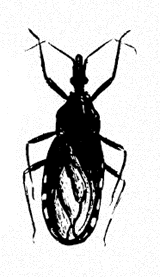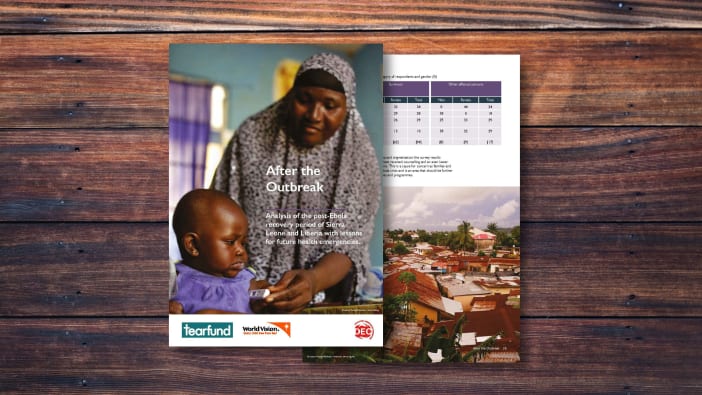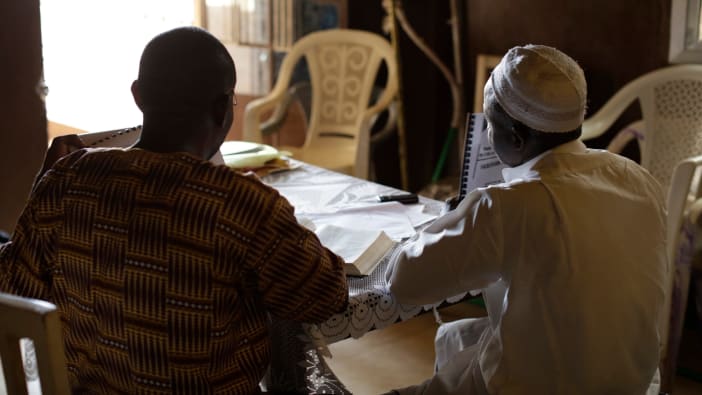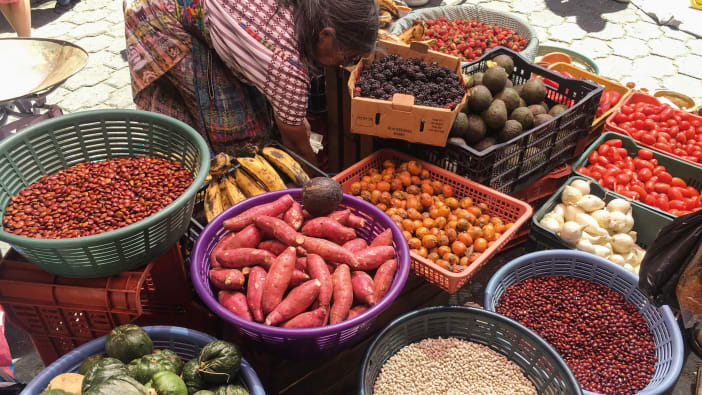Information compiled by Isabel Carter and based largely on information from IAMAT and WHO publications, including press releases, Tropical Disease Research and Control of Tropical Diseases.
1. Dengue fever
INTRODUCTION
Dengue fever is spread by mosquitoes and in recent years has become a major health concern. It occurs particularly in urban areas. There are an estimated 50 million cases of dengue infection every year (WHO). In addition, there is a complication known as dengue haemorrhagic fever and over 40 countries around the world have now had epidemics.
INFECTION
Dengue is spread by Aedes mosquitoes in the same way as malaria – except that these mosquitoes bite during the daytime. They breed in the dirty water which often results from poor sanitation and drainage in urban areas.
SYMPTOMS
Dengue fever is a severe ’flu-like illness with high fever, headaches, pain behind the eyes, joint pains and a rash. Dengue haemorrhagic fever is a deadly complication with very high fever, sometimes accompanied by a swollen liver and fits.
TREATMENT
There is no set treatment for dengue, but good nursing care can often help to save lives.
CONTROL
The only effective control measures are to prevent mosquitoes from biting and to remove their breeding sites. Cover arms and legs and, if possible, use insect repellent – especially if there is known to be a local outbreak.
FUTURE POTENTIAL
There are four different viruses which can cause the disease, making it very difficult to produce an effective vaccine, but progress is being made.
2. Lymphatic filariasis
INTRODUCTION
120 million people around the world are infected with this disease
INFECTION
The disease is spread by mosquitoes which are infected with the larvae of a worm.
SYMPTOMS
In a third of those known to be infected, the adult larvae develop in the bloodstream and lymph system. This can lead to blockages causing:
- elephantiasis (swelling and enlargement of limbs, usually legs) – 15 million people
- genital damage (hydrocoele: swelling of the scrotum) – 27 million men
- lymph infection (pain and swelling of lymph nodes, often with nausea, fever and vomiting) – 16 million people.
In the other two thirds the damage to their lymphatic and renal systems may remain hidden but their health suffers and many days are lost from work.
TREATMENT
Previously treatment was limited and had severe side effects. New drugs are now available to treat infection. With elephantiasis, simply washing with soap and water and applying antibiotics has proved very effective.
CONTROL AND FUTURE POTENTIAL
Recent research has found that the disease can be controlled very cheaply and effectively by one dose each year of drugs (Ivermectin with DEC or albendazole) which prevents the larvae from developing in the blood stream. It costs only US $1 to treat 20 people in this way.
3. Malaria
INTRODUCTION
There are an estimated 300–500 million cases of malaria every year. Malaria is one of the five leading causes of death in children under five. WHO estimates that over 1 million children and up to 1.5 million adults die each year from malaria. 90% of deaths are in Africa. Children under five and pregnant women are those most at risk from severe attacks.
INFECTION
Malaria is passed on only by Anopheles mosquitoes. You can tell these from other mosquitoes by the way their ‘tails stick up’. When mosquitoes bite, they suck up blood. If the person they bite has malaria, parasites in this blood breed and develop in the mosquito. When the mosquito feeds on another person, these parasites are injected with the mosquito’s saliva. This person may then develop malaria.
Almost all Anopheles mosquitoes feed between sunset and sunrise. After feeding they usually rest on the walls or ceiling while they digest the blood.
Female mosquitoes feed on blood every two or three days. It provides them with protein for developing their eggs. They lay eggs in shallow water (puddles) or ponds. The eggs hatch into larvae which take about a week to emerge as adult mosquitoes. Mosquito larvae float horizontally in water unlike other types of larvae.
SYMPTOMS
Symptoms develop from 10 to 28 days after being bitten by an infected mosquito. Symptoms can vary, with each person having their own ‘pattern’. They include fever, headaches, anaemia, fits (in children), nausea, vomiting and diarrhoea.
TREATMENT
There is growing resistance to the more commonly available drugs. Quinine and chloroquine are most commonly used. Delay in seeking treatment allows the malaria parasites to multiply rapidly within the body. The introduction of charges for health treatment often means people try traditional cures, or self-medication before attending a clinic. Such delay can be fatal.
CONTROL
Clear all possible areas of standing water near homes. If there are muddy areas near wells or pumps, dig this out to a depth of about 1 metre and fill with large stones, using gravel and small stones on the surface. Check for old tin cans, broken pots or broken glass on top of walls which may hold water. Cut grass and small shrubs short near the house. Plant neem trees near homes.
Use treated bed nets or door and window curtains (see pages 8–9). Take particular care of babies, young children and pregnant women. Give them priority if there are not enough nets. Research has found that the use of treated bed nets can reduce malaria outbreaks by a half.
Do not take prophylactics (preventive) treatment unless medically recommended. It will reduce natural resistance. People who spend a long time living in malaria-free areas – such as highlands – or overseas students will lose their natural resistance after about a year. If they return for short visits they should take prophylactic treatment. If, however, their return is more permanent, they should not take preventive medicine but instead allow their natural resistance to build up again (even though they are likely to suffer a few attacks of malaria while this is happening).
Mosquitoes are attracted to sleeping people. Treated nets act like a baited trap. The chemical held in the treated net is often sufficient to kill a mosquito. Torn nets give little protection. Researchers know that the best place to look for well fed mosquitoes is inside the average net in a village home! Treated nets will help to keep out mosquitoes from small holes. Tears and holes should be mended immediately they are noticed.
FUTURE POTENTIAL
Trials are under way for a number of vaccines. Some show signs of proving very effective, but it will be many years before any are likely to be widely available. It has also proved very hard to find funding for research.
4. Yellow fever
INTRODUCTION
Yellow fever is found in many parts of Africa and Latin America. It is a virus disease spread by mosquitoes. The virus can live in humans and monkeys.
INFECTION
The bite of either an infected mosquito or a mosquito carrying infected blood from a human or monkey passes on the infection.
SYMPTOMS
Some attacks are mild, causing fever, aching joints, nausea, vomiting and headaches. The patient usually recovers and is then immune from further attacks. During epidemics, symptoms tend to be more severe, with jaundice and haemorrhages; up to half of those infected may die.
TREATMENT
There is no treatment except good nursing care.
CONTROL
Vaccination for people living in or entering infected areas lasts for 10 years. Some governments are introducing the vaccine into their national immunisation programmes. Otherwise, control measures are the same as for malaria – trying to protect people from mosquito bites.
5. Sleeping sickness
INTRODUCTION
About 55 million people in Africa are exposed to the risk of infection from sleeping sickness (or trypanosomiasis). Though in many countries it was almost eradicated in the 1950s, it is now reaching epidemic proportions. Shortages of the drugs for treatment have increased the infection and death rates. This is a disease of rural areas where cases are often unreported and treatment is not available.
INFECTION
The disease is spread by the tsetse fly – a large fly with crossed wings which lives on river banks, forests or low shrub. The flies become infected by sucking the blood either of an infected animal or person. The parasites multiply in the fly and are then injected with the saliva into another person.
SYMPTOMS
Sleeping sickness begins with a hard swelling where the fly has bitten. Fever, headaches, itching and joint pains follow in the early stages. After several weeks, the body’s nervous system is affected and tiredness, shaking, swellings and wasting of the body follow. The patient’s behaviour and mood change. During the day, exhaustion means that even eating and talking become a huge effort. At night the patient is unable to sleep. Without treatment the person will die after 6–9 months, often with friends and family convinced that such a painful death must be the result of witchcraft or madness.
TREATMENT
Treatment is expensive and usually requires hospitalisation. The drug Melarsoprol is most commonly used. This is the cheapest medication but still costs about $50 per person. However, its future production is threatened due to concern over damage to the environment during its manufacture in Germany. Alternative drugs, Eflornithine and Nifurtimox, are even more expensive (about $200 per treatment). Treatment is not without risk, but without it the chances of recovery are nil.
CONTROL
Clearing the bush may prevent the flies surviving the dry season. People should not settle in tsetse fly infested areas. Tsetse fly traps and insecticides can help to control the numbers of flies. Remove potential animal sources of infection such as dogs, cattle etc.
FUTURE POTENTIAL
Campaigns to eradicate the tsetse fly almost succeeded several decades ago. However, cutbacks in government spending meant that widespread spraying largely stopped. Now this dreadful disease is affecting alarming numbers of people.
6. Leishmaniasis
INTRODUCTION
Leishmaniasis is a group of related parasitic diseases which together affect 12 million people in 88 countries around the world. Large movements of people – for example the settling of new regions in the tropical plains in South America, or growth of migrant labour – bring increasing numbers of unprotected urban people into contact with the disease in rural areas and greatly increase its spread. People already infected with HIV are much more likely to suffer from more severe infection.
INFECTION
The diseases are spread by the bite of a tiny sandfly. Only the female bites, feeding on blood to develop its eggs. The painful sting can pass on the parasites.
SYMPTOMS
The disease can lead to a range of symptoms:
- Many ulcers can form on exposed parts of the body such as the face, arms and legs. These lead to permanent scarring.
- The infection can destroy tissues in the nose, mouth and throat, leading to severe disfigurement, with victims sometimes cast out of their community.
- Infection can be internal, causing fever, weight loss, swelling of the spleen and liver and anaemia. If left untreated, this form often leads to death. It is known as kala-azur.
TREATMENT
Infection may be difficult to diagnose. The disease can be treated but this must be done in the early stages. Antimonial drugs are used but treatment is expensive, often involving hospital care.
CONTROL
- Dogs and rodents are the main reservoirs of infection. Rodents should be eliminated and dogs tested for parasites. If present, they should either be treated or killed.
- Remove possible breeding sites for sandflies by clearing vegetation, rubbish or building rubble from near homes. Spraying insecticide (particularly at the same time) is effective.
- Use treated bed nets and curtains.
7. Chagas disease
INTRODUCTION
16 to 18 million people are infected with chagas disease in Latin American countries. About 45,000 people are known to die from this disease each year. Many more deaths may occur but are recorded as due to other causes.
INFECTION
The disease is passed to people by a bloodsucking bug which is brown, oval in shape and about 2cm long.










